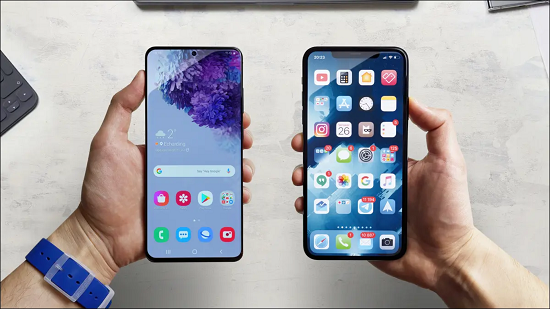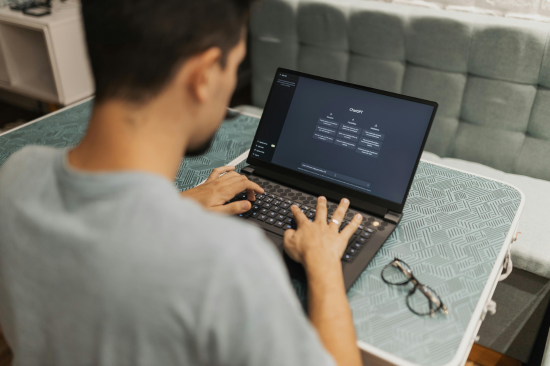Android vs iPhone - Which One is Better?
| Wednesday September 21Buying a smartphone is a lot like buying a car these days. Whether you get a Ford Focus or a Toyota Corolla, it doesn’t really matter in terms of sheer utility. Both will get you from A to B with almost a similar price, performance, and so on. They’re likely to have similar perks too, like Bluetooth connectivity or GPS. Which one you ultimately choose depends mostly on just one factor: which one you like better on a primal level that’s hard to communicate other than “this feels right.”
That’s now true for smartphones too! If you are deciding between an iPhone or an Android, it really comes down to whichever feels best in your hands. Every modern smartphone does the basics: they’ve got high-speed internet, they run apps and play movies, they take pretty good pictures and videos, and they let you Snapchat silly pictures to your pals. And for the most part, every major feature on an Apple device has an equivalent feature on an Android phone, and vice versa. Want mobile payments? There’s Apple Pay, Samsung Pay, and Google Wallet. Smartwatch connectivity? There’s Apple Watch and Android Wear. In-car infotainment controls? There’s CarPlay and Android Auto. And so on.
iPhone apps are first and better looking
Most of the popular apps are on both platforms, but many top games and apps still come to iPhone first. Spotify recently introduces Spotify Running for the iPhone and this is not the only app that you cannot find on Android.
When apps are available on iPhone and Android, we still often see a better design on the iPhone version than on Android.
Apps are an area where the gap is closing, but as a group who switches back and forth between iPhone and Android daily, the differences still exist.
The folder full of apps on home screen
This is admittedly a minor gripe but I’d really like the option to just delete a lot of the pre-loaded apps that come with any iPhone. The reason that I only consider this a minor gripe is that I know from experience, things are much, much worse in this regard for most Android phones that come with both OEM and carrier bloatware.
Even so, it would be great if I could at least remove the Stocks app from my home screen altogether instead of hiding it away in a folder with a bunch of other apps that I want to delete but can’t.
Battery life has been not-so-great this far
The good news here is that Apple offers great tools to help you track which apps are wrecking the iPhone’s battery. I’ve already decided to use Safari in favour of Chrome on the iPhone after being positively horrified at the amount of battery life Google’s mobile browser uses.
Other smartphone manufacturers have managed to make devices that are sufficiently slim while also including larger batteries and I hope Apple can as well in the future.
For what it’s worth, I’ve heard that battery life for new iPhones is always particularly bad in the beginning because the devices are re-downloading a bunch of content and settings and that it will improve after about a month or so. I hope this is the case!
Guest mode
The Guest mode introduced by Google in Android 5.0 has proven to be a positive for many, especially for parents who share their phones with their kids. The availability of setting up a guest mode on Android phones not only keeps your data safe and away from the reach of others, but also makes it easier for users to share their Android devices with other family members. iPhones don’t have a comparable feature to offer.
Others
Once you get past the glance-ability, Android also has iOS beat when you dive into the listing of alerts. Ironically, iOS is actually more configurable and customisable in its listings, but Android’s default configuration nails it, and that’s more important since most people never change the defaults. While iOS lets you decide how many alerts you want to show for each app and how you want to organize them, Android simply mixes up the alerts and shows them in chronological order from the time they happened. In Android 4.0, you can also simply swipe right to dismiss individual alerts, which isn’t possible in iOS.
Another thing to keep in mind here is that Google is just really good at alerts, and Apple isn’t. Take a look at what Google has done with Google+ alerts by building them into the universal Google toolbar and giving an excellent at-a-glance look at the activity that’s happening around your Google+ content. Meanwhile, Apple has still never built a decent universal alerts system into Mac OS. The most popular solution is the third-party app Growl.
Don’t get me wrong, there are plenty of other things that Andoird does better than iPhone – for example, turn-by-turn GPS navigation and Google Voice integration. But, Apple will likely catch up in maps and GPS and Google Voice is a niche solution mostly used by technophiles. Alerts represent the one area where Android is a lot more friendly and usable than iOS, and that’s unlikely to change any time soon unless Apple does a more drastic redesign on the user interface of its home screen.
About the author
Souvik Ghosh is an avid learner and blog author. He runs Pets Helps. He started blogging from 2012 and considers the reader comments even more important than his own posts.





